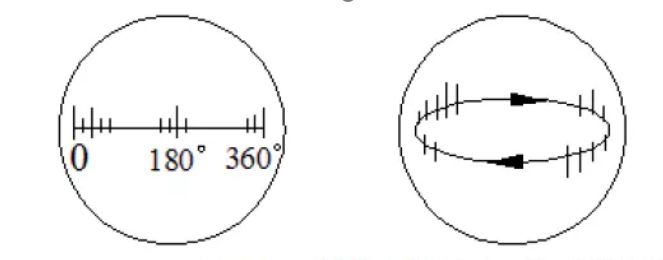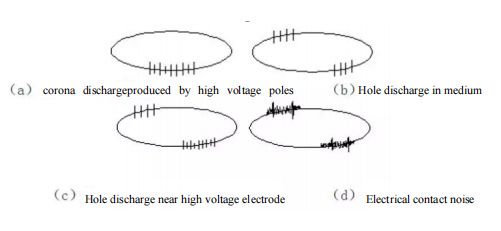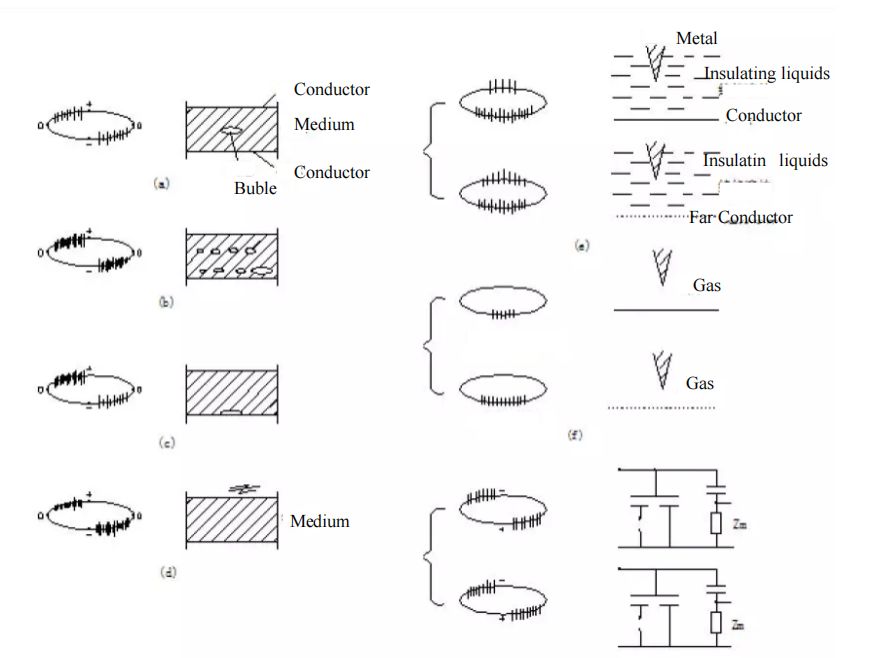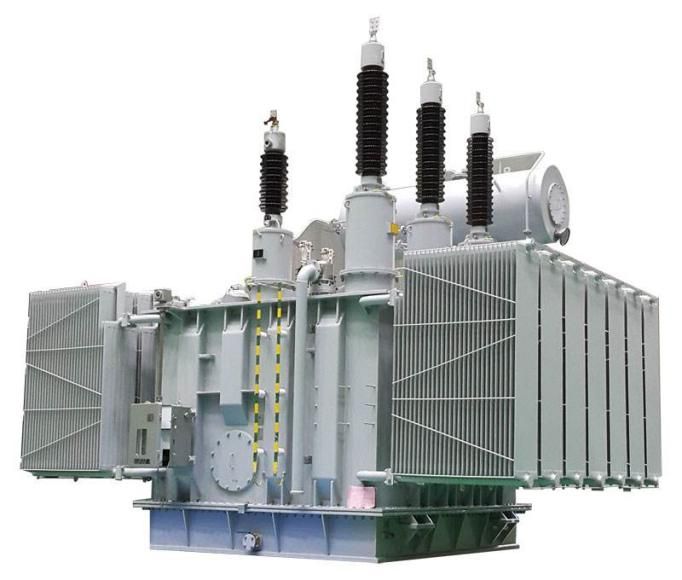IV. Partial Discharge Test of Dry Transformer
1.Waveform Analysis of Partial Discharge
The voltage across the detection impedance Zm (that is, the detection signal) is quite small and must be amplified to give a distinct indication on the instrument. The peak value of the pulse signal amplified by the amplifier can be measured by the oscilloscope. In addition, the oscilloscope can also see what phase of the discharge occurs in the power frequency, determine the pulse waveform and discharge times, and observe the characteristics of the whole partial discharge. To determine the approximate location and nature of the discharge. Oscilloscopes can be scanned horizontally and elliptically. Horizontal scanning is performed with full-screen deflection equivalent to one cycle and synchronized with the test voltage to determine the phase of the pulse. Elliptical scanning is also equivalent to one cycle of test voltage per sweep cycle. FIG. 4-1 Schematic diagram of the waveform on the screen of two scanning modes.
FIG.4-1
In partial discharge test, in addition to insulation internal partial discharge may be produced, the connection of lead, electrical contact and fluorescent lamp, high voltage electrode corona, etc., may also affect the waveform of partial discharge. To this end, it is necessary to distinguish the waveforms of partial discharge and other interference inside insulation. FIG 4-2 is several typical waveforms.
FIG4-2
2. Spectrum Identification of Partial Discharge
Figure 4-3 shows different types of partial discharge oscillograms, which are obtained near the initial voltage. Figures (a), (b), (c) and (d) are the basic patterns of partial discharge, and (e), (f) and (g) are the basic patterns of interference waves.
FIG4-3
In (a), there is only one air gap perpendicular to the direction of the electric field in the insulating structure, and the discharge pulse is superimposed on the position between the positive and negative peaks. The pulse amplitude and frequency on both sides of the symmetry are basically equal. But sometimes the upper and lower amplitude of 3:1 asymmetry is still normal. The relationship between the discharge and the test voltage is that after the initial discharge, the discharge increases to a certain level, and the discharge remains unchanged with the increase of the test voltage. The extinguishing voltage is approximately equal to or slightly lower than the starting voltage.
In (b), the insulation structure contains air gaps of various sizes, which are mostly castable insulation structures. When the discharge pulse is superimposed on the position before the positive and negative peaks, the amplitude and frequency of the symmetrical two sides of the pulse are basically equal, but sometimes the asymmetry of the upper and lower amplitude of 3:1 is still normal. At the beginning of the discharge, the discharge pulse can be resolved, and then the voltage rises, some discharge pulse moves to the direction of the test voltage zero position, at the same time there will be a larger pulse, pulse resolution gradually decreased, until can not be resolved. After the initial discharge, the discharge increases steadily with the increase of voltage, and the extinguishing voltage is basically equal to or lower than the initial voltage.
In (c), there is only one air gap in the insulating structure. The discharge response of the air gap on the surface of the electrode is different from that in the dielectric. The discharge pulse is superimposed on the positive and negative peaks of the voltage, and the amplitude of both sides is not symmetrical, the frequency of the large amplitude is low, and the frequency of the small amplitude is high. The ratio is usually greater than 3:1 and sometimes 10:1. The total discharge response can be distinguished. Once the discharge starts, the discharge quantity is basically unchanged and has nothing to do with voltage rise. The extinguishing voltage is equal to or slightly below the starting voltage.
In (d), (1) a cluster of air gaps of different sizes are located on the surface of the electrode, but they are closed type; (2) The electrical gap between the electrode and the insulating medium is not closed. The amplitude ratio between the two sides is usually 3:1 and sometimes 10:1 before the discharge pulse is superimposed on the negative peak of the voltage. As the voltage rises, part of the pulse moves towards zero position. After the initiation of discharge, the pulse resolution is fair. Keep increasing the pressure, and the resolution drops until it's indistinguishable. After the initial discharge, the discharge emperor increases gradually with the rise of voltage, and the extinguishing voltage is equal to or slightly lower than the initial voltage. If the voltage lasts for 10 min, the discharge response will change somewhat.
(e) The interference source is the liquid medium between the needle point and the flat plate or the earth. Corona discharge occurs at lower voltage, and the discharge pulse is superimposed on the peak voltage position. Such as at the negative peak. Discharge power is at high potential; If located in the positive peak place power supply is at low potential. This helps determine the zero position of the voltage, and a pair of pulses appear symmetrically at positive or negative voltage peaks, with equal intervals for each cluster of discharge pulses. However, the amplitude and time interval of the two clusters are different, and the smaller cluster has the same amplitude and is more dense. A larger pulse has a lower initial voltage and the discharge increases with the increase of voltage. The initial voltage of a cluster of smaller pulses is higher, and the discharge quantity is independent of the voltage and remains unchanged. As the voltage rises, the pulse frequency density increases, but is still distinguishable. As the voltage rises, it becomes indistinguishable.
(f) Needle tip against flat or terrestrial gas medium. Corona discharge occurs at lower voltage, and the discharge pulse is superimposed on the peak voltage position. Such as in the negative peak, the power supply is at high potential; If it is located at positive peak, the power supply is at low potential. This helps determine the zero of the voltage. After the initial discharge, the voltage increases and the discharge quantity remains unchanged, but the pulse density diffuses to both sides and the discharge frequency increases, but it is still distinguishable. As the voltage increases, the discharge pulse frequency increases to gradually indistinguishable.
(g) Suspension potential discharge. An electric discharge between two suspended metal objects in an electric field, or between a metal object and the earth.
There are two types of waveform:
1. The positive and negative sides have the same pulse amplitude, equal interval and frequency;
2 The pulses on both sides appear in pairs, with the same pair spacing, and sometimes move back and forth across the baseline.
There are three types of initial discharge:
(1) The discharge quantity remains unchanged, independent of voltage, and the extinguishing voltage is completely equal to the starting voltage.
(2) The voltage continues to rise, and at a certain voltage, the discharge suddenly disappears. When the voltage continues to rise and then fall, it will discharge again at the previous vanishing voltage.
(1)With the increase of voltage, discharge power gradually decreases, discharge pulse increases.
Post time: Mar-10-2022
 +8613505407298
+8613505407298 trihope@aliyun.com
trihope@aliyun.com








